The following pieces have been released as Special Edition Publications. This means that they are pieces derived from DSFG network members or are responses to inquiries from the Department of National Defence or the Canadian Armed Forces.
Practical Guide to Writing Briefing Notes in the Government of Canada
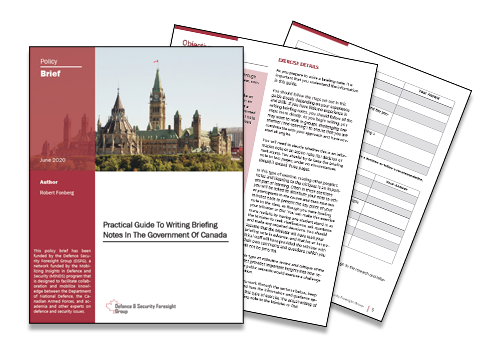
Robert Fonberg, former Deputy Minister of the Department of National Defence as well as several other departments in the Government of Canada, worked with the DSFG to train our Junior Fellows in writing policy briefs.
In the process, he developed the Practical Guide to Writing Briefing Notes in the Government of Canada, which you can use as a tool in your own policy brief development.
DSF Group Practical Guide to Writing Briefing Notes in the Government of Canada July 2020 (PDF)
Asia Pacific Region

Anticipating Climate-Induced Instability Analysing the Intersection of Security and Disasters in Southeast Asia (pdf)
Emma Fingler
The association of Southeast Asian Nations (ASEAN), a governance actor in the most climate vulnerable affected region in the world, has employed exceptional awareness and attention to natural disaster resilience and response (UNESCAP 2019). In 2020, ASEAN introduced a new Disaster Management Framework (ASEAN, 2020), which provides an opportunity to align disaster governance with security governance at the regional level. The intersection of disasters and security (the climate-conflict nexus) has become
increasingly relevant as global warming affects the severity and frequency of disasters, creating a variety of unconventional security challenges. However, the climate-conflict nexus in Southeast Asia remains surprisingly understudied and is often lacking gender-based analysis as a core component. Thus, this paper asks, how can ASEAN effectively align disaster governance with security governance to decrease risks and promote opportunities for peace? It argues that ASEAN has demonstrated a vested interest in expanding its role in disaster governance, but it must establish greater attention to the matter with a GBA+, which can greatly enhance and strengthen its regional security framework and stability of the region. To demonstrate this, the paper examines ASEAN security and disaster policies and uses the climate-conflict nexus to provide policy-oriented recommendations. These recommendations are based on an understanding that disasters and security are connected, and that gender, which is commonly overlooked, is a required component of
effective disaster risk reduction and response. Finally, the role of the Women, Peace and Security agenda is highlighted, arguing that this agenda has a role to play in disaster response, especially as climate change increases the frequency of major disaster events that pose security risks. Thus, this paper aims to improve our understanding of how disaster and security governance can be combined, complemented by a GBA+ approach, to increase opportunities for peace and stability in Southeast Asia.
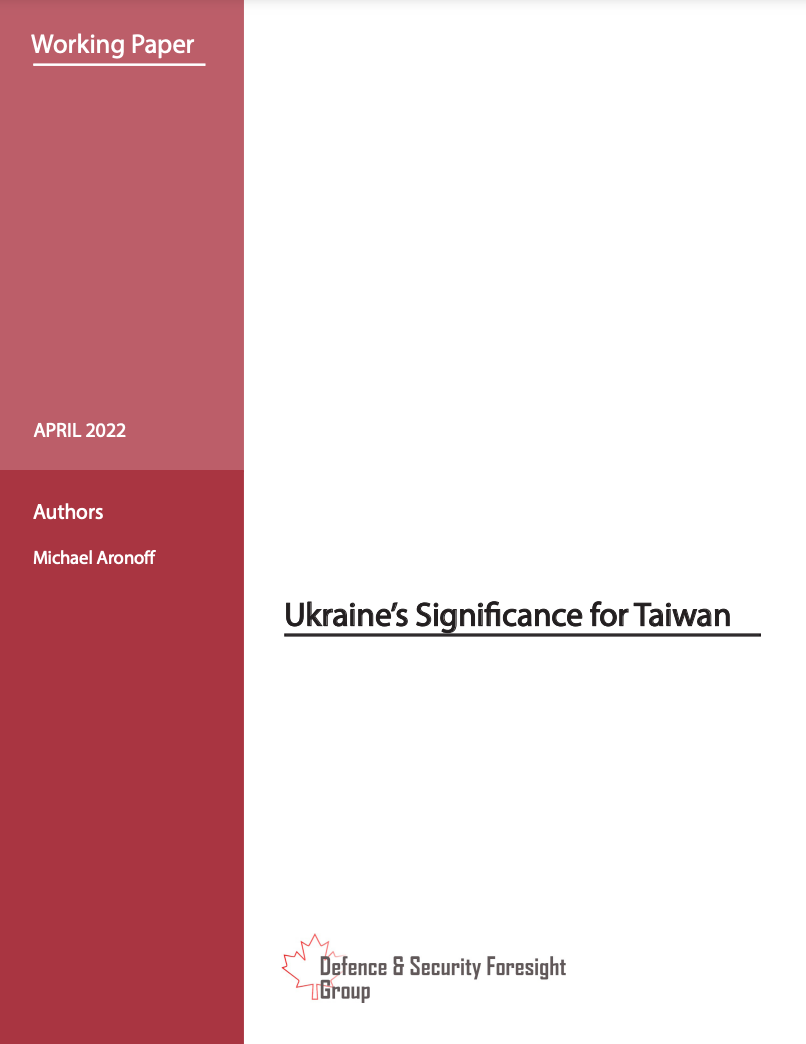
Ukraines Significance for Taiwan (pdf)
Michael Aronoff
Russias brutal and unprovoked invasion of Ukraine is the most significant crisis between Russia and the West since the end of the Cold War and has generated attention over its implications for Taiwan. As Russias invasion intensifies, there has been growing concern that China may be emboldened to seize Taiwan by force. The comparison is understandable. Like Ukraine, Taiwan is a peaceful democracy facing a militarily superior and revisionist authoritarian state unwilling to tolerate its independence. But beyond these broader parallels, there are significant differences between the security situations of Taiwan and Ukraine, notably around their security relationships with the United States. Taiwan benefits from a strong relationship with the US and an ambiguous security commitment that China believes the US will make good on. Ukraine on the other hand is not a NATO member and does not have a security guarantee from the US leaving it more vulnerable to Russia. Furthermore, the seemingly close relationship between China and Russia and shared revisionist title masks fundamental differences in their visions for the international order. Russia is a declining power whose ambitions outstrip its capabilities, while China is a rising power pursuing global leadership. A move against Taiwan might be seen as a coordinated authoritarian challenge to the international order that could trigger severe economic and diplomatic repercussions. This would threaten Chinese interests and makes an invasion of Taiwan less likely while until the Ukraine crisis persists. The current crisis also offers lessons that can be applied to increase deterrence over a potential Taiwan crisis. First, intelligence has played a critical role in denying the element of surprise, controlling the narrative, and rallying international support for Ukraine. Second, the US and its allies have demonstrated a willingness to enact coordinated economic and political responses that impose very high costs. Allies should prepare a list of agreed sanctions in advance and seek to stockpile or remove China from critical supply chains. Finally, Ukrainian resistance has shown how costly an occupation against a hostile population can be and the effectiveness of cheaper asymmetric and unmanned systems like drones. Ensuring Taiwan has access to these systems and weapons would help alter Beijings calculations regarding the feasibility of seizing Taiwan. Deterring China from using force against Taiwan will be difficult. These lessons will help convince leaders in Beijing that an invasion of Taiwan could cost them their national rejuvenation and undermine CCP legitimacy at home.
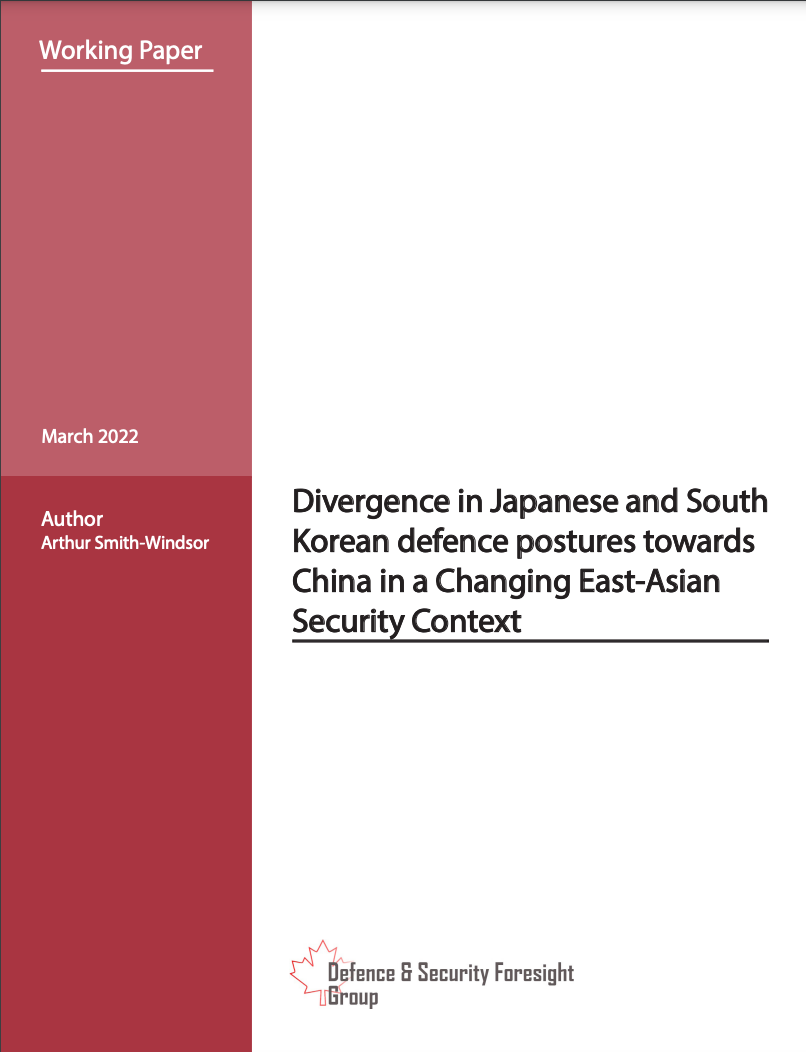
Divergence in Japanese and South Korean defence postures towards China in a Changing East-Asian Security Context (pdf)
Arthur Smith-Windsor
This paper explores why South Korea and Japan have adopted divergent security postures towards China. In other words, why has Japan pursued a more confrontational posture characterized by rearmament and deeper strategic cooperation with the United States while South Korea has maintained more balanced relations with China characterised by deeper diplomatic, military, and economic relations including a mutual declaration of a strategic partnership? I argue that Japans stance can be explained by three primary factors: territorial disputes over the Senkaku/Daiyo islands, a widening power imbalance, and mutual distrust that casts a long shadow over Sino-Japanese relations. Alternatively, South Koreas stance can be explained by the saliency of North Korean threat, which overrides other security concerns and has pushed it to maintain a close relationship with China due to Chinas important role in resolving this conflict. I also suggest that South Korea and Chinas shared historical experience of colonial occupation by Japan may contribute to a generally less antagonistic relationship. The article begins with a brief review of Japanese and South Korean defense postures towards China. This is followed by comparison of both states defense white papers in relation to the wider security context. The paper concludes with some considerations regarding the potential direction that Japan and South Korea might take moving forward as the regional security environment evolves.
Black Sea Region
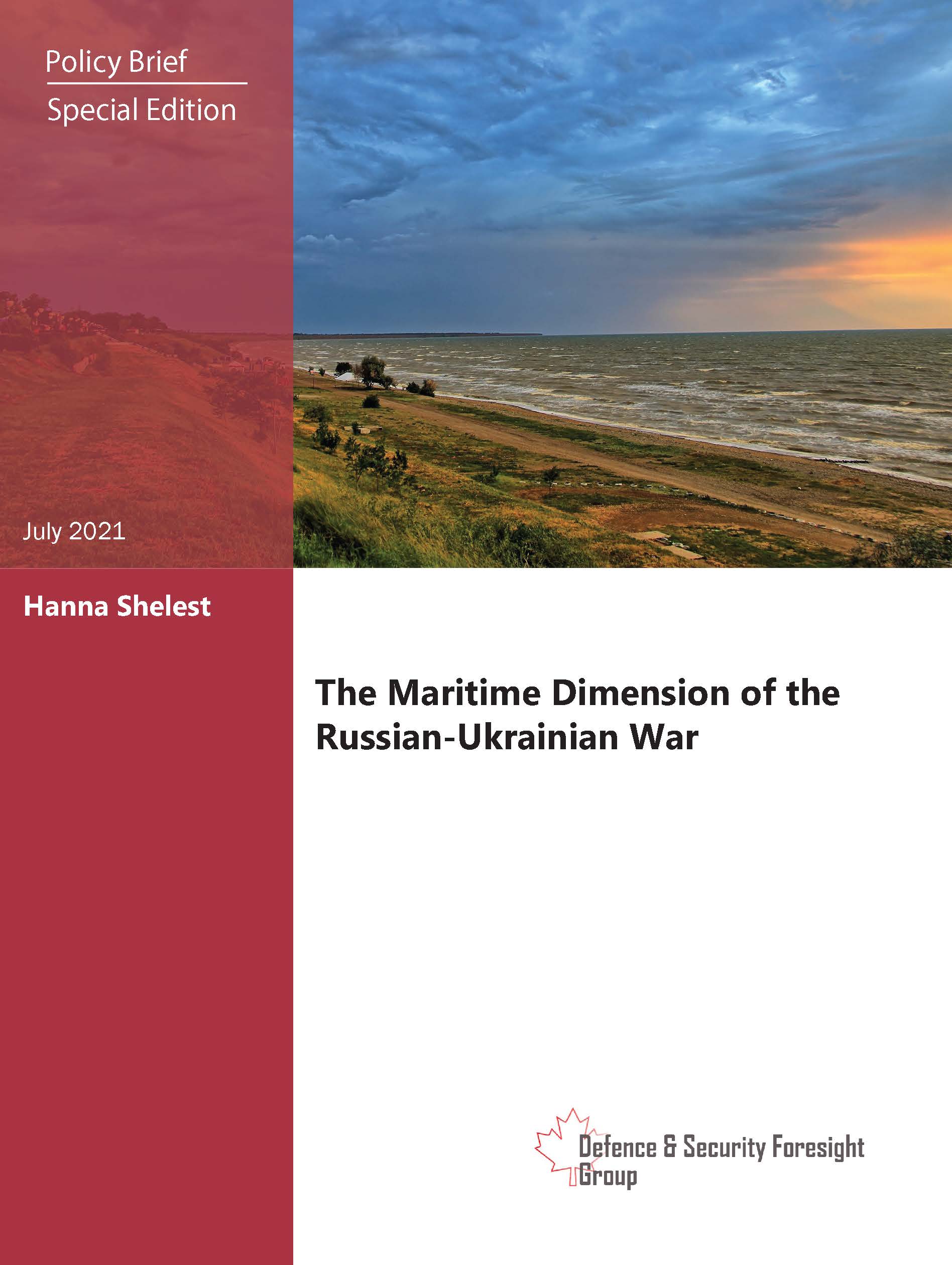
The Maritime Dimension of the Russian-Ukrainian War (PDF)
Hanna Shelest
Russian-Ukrainian war has been traditionally analysed in two dimensions - the Crimean occupation and the military activity in Eastern Ukraine. However, a third dimension - maritime has been developing steadily, presenting higher risks and multiply manifestations. As the Russian Federation uses Eastern Ukraine and the Black Sea region as a testing ground for many military and hybrid tactics, later applying them in other regions, the maritime dimension of the Ukrainian-Russian war is worthy of study for better understanding Russian actions in the Baltics, Northern Sea, Arctic, Japan Sea, Mediterranean, and elsewhere. The April 2021 military build-up that attracted the attention of all NATO allies demonstrated the significance of the maritime domain for the Russian Federation, as the deployed ships remained despite the announced withdrawal of forces. Moreover, increased activities in the Black Sea region during the last two years give us arguments to consider the maritime domain a full-fledged third theatre of confrontation.
It is necessary to understand that Russian actions in the Black Sea and the Sea of Azov are not aimed only at Ukraine, but first of all to project power against NATO as an organization and against Turkey as an individual state.
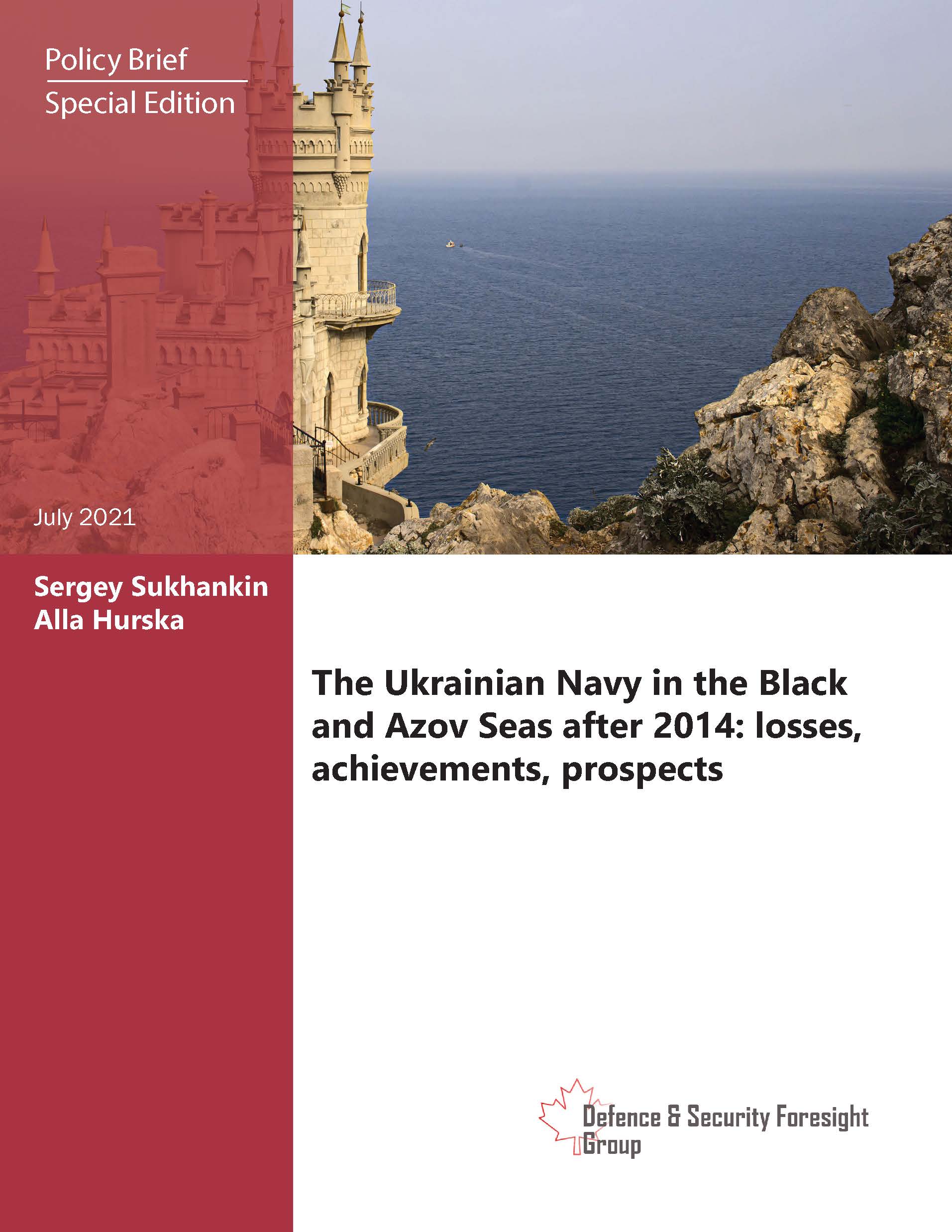
The Ukrainian Navy in the Black and Azov Seas after 2014 (PDF)
Sergey Sukhankin and Alla Hurska
This policy brief analyses the current military-political environment in the Black and Azov Seas, concentrating on Ukrainian capabilities in the light of Russias annexation of Crimea in 2014. This piece discusses trends and future scenarios for Ukraine, outlining, among others, potential implications for NATO, in general, and Canada, in particular. The background segment provides the contextual framework, aiming to realistically assess the losses suffered by Ukraine as well as its achievements in restoring its military potential. Thereafter we highlight scenarios and implications for NATO/Canadas regional security interests. Given Russias military power, the general complexity of military-political nature of the region, and growing frictions within NATO as well as Canadas geographic remoteness from the area, we argue that Canadas role in supporting Ukraine should be primarily concerned with:
- Rendering political-diplomatic and informational support;
- Financial assistance and knowledge transfer through cooperation in the realm of defence industry;
- Providing (non)lethal weaponry; and
- Continued participation in joint/multi-lateral military exercise and war games in the framework of NATO.
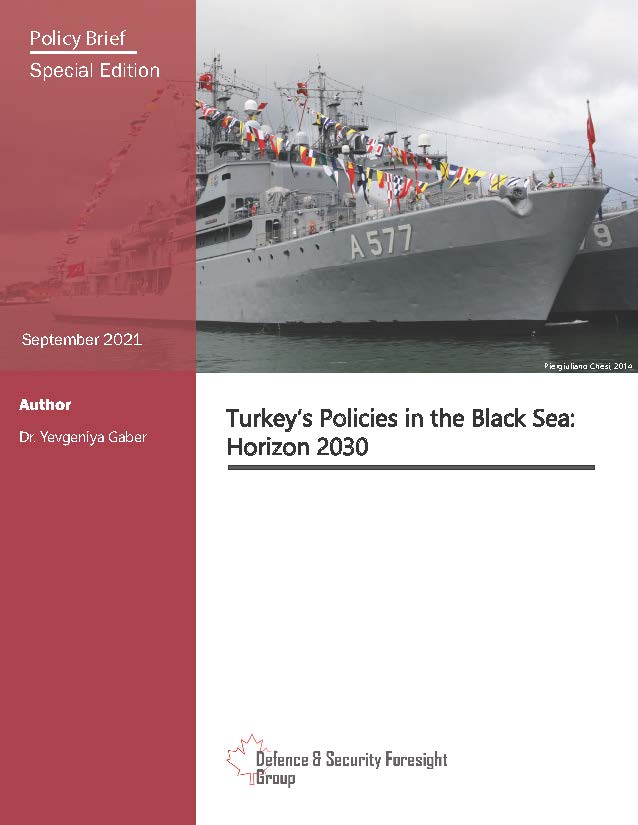
Turkeys Policies in the Black Sea: Horizon 2030 (PDF)
Dr. Yevgeniya Gaber
Turkey plays a leading role in maintaining security in the Black Sea region. Being a NATO member and developing close military cooperation with Moscow, Ankara has traditionally adopted a strategy of balancing between Russia and the West in its quest for a leadership role and stability in the region. However, with changing regional dynamics amid a more aggressive Russia, Turkeys stance on a number of regional issues might need to be revised.
This paper aims to look at how Turkeys policies in the Black Sea might evolve in the next five to ten years, and what these changes would mean for Canadian and NATOs interests. Based on a short overview of Ankaras post-Cold War policies and analysis of its current strategic vision, several possible scenarios for the mid-term future are discussed. The general assumption is made that while the ad hoc tactics and situational coalitions might vary depending on the current domestic and regional conjuncture, Turkeys long-term interests in the region will most likely remain unchanged: to keep NATO out, littoral states in and Russia down. For this purpose, Ankara will most likely try to strengthen its own position in the region and prioritize multilateral regional formats of cooperation over boosting NATOs presence in the Black Sea.
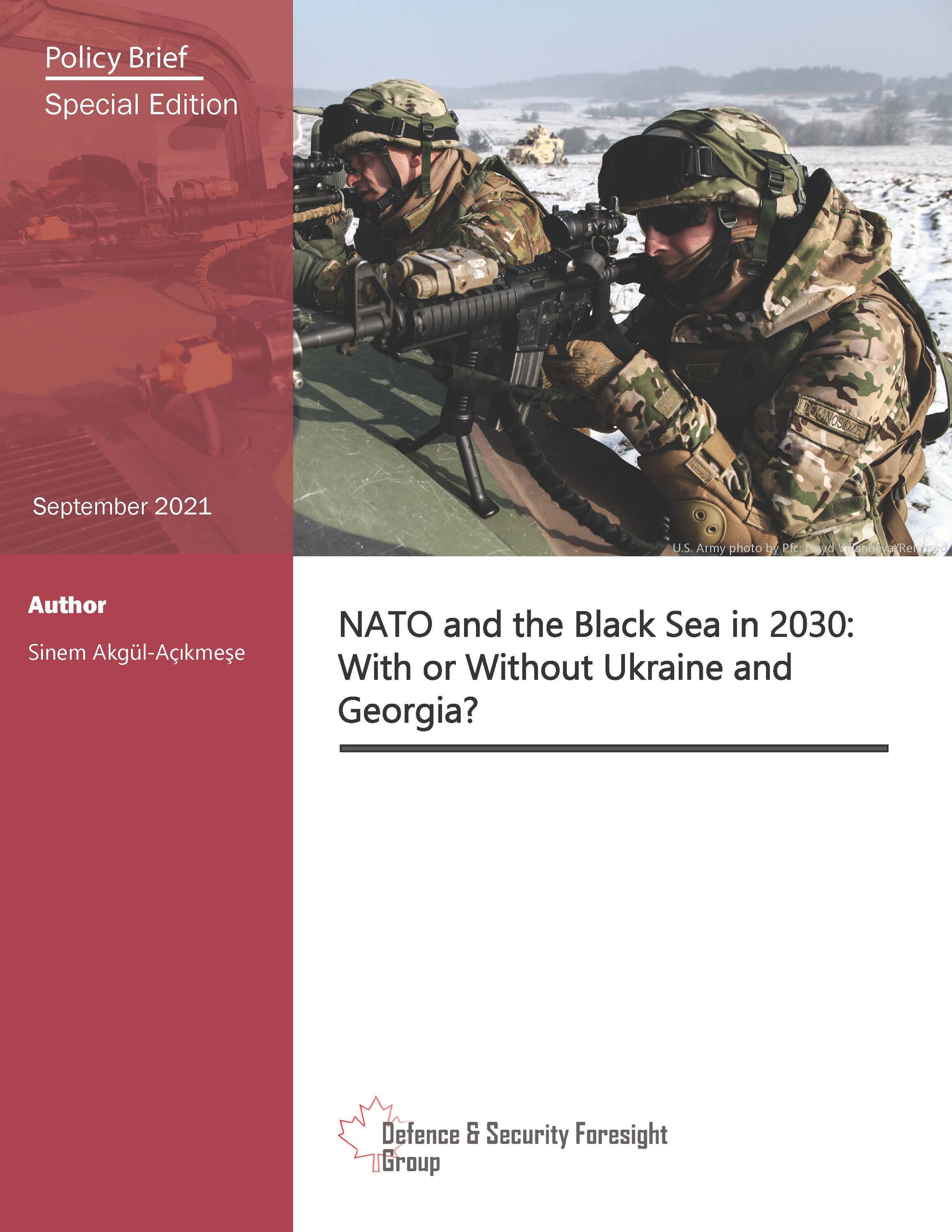
NATO and the Black Sea in 2030: With or Without Ukraine and Georgia? (PDF)
Sinem Akgül-Açıkmeşe
This paper aims to explain the current dynamics and the potential future form of NATOs Black Sea strategy. The overarching questions are: first, to what extent has NATO been an influential player in the region; and second, how would a robust NATO Black Sea strategy look in 2030? In order to answer these questions, among various variables, this paper will only look into NATOs relations with Ukraine and Georgia as littoral countries that aspire to receive, and that have been promised, NATOs membership. Accordingly, it will look at NATOs current policies, especially after the Georgian war in 2008 and since Russias occupation of Crimea in 2014 when Russia expanded its presence in the region in a more aggressive manner. Thereafter, in order to forecast NATOs robust Black Sea strategy in 2030, this paper will include three scenarios: 1) Ukraine and Georgia as members; 2) Ukraine and Georgia as non-members and less-integrated; and 3) Ukraine and Georgia as non-members, but deeply integrated into NATOs structures.
Middle East and North Africa Policy Briefs
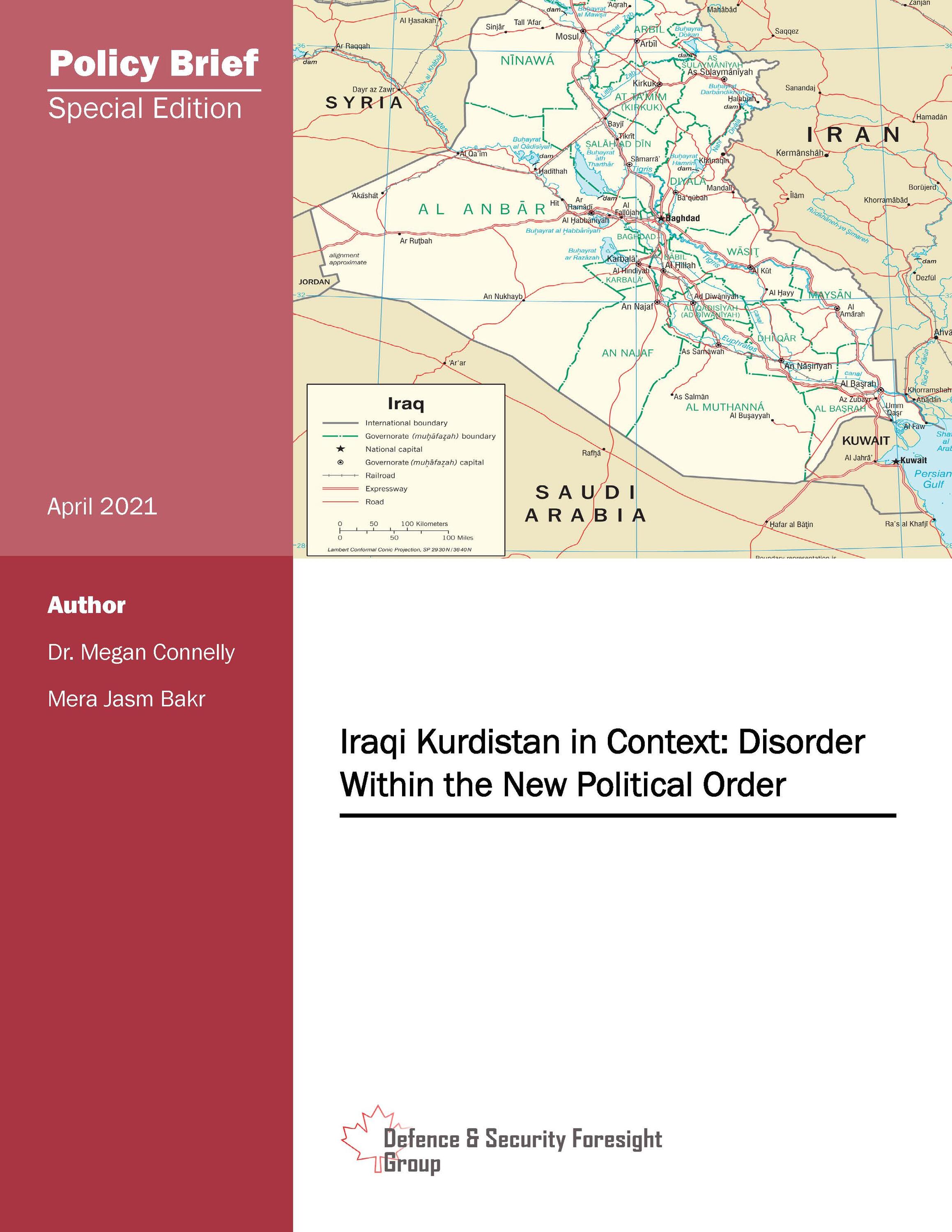
Iraqi Kurdistan in Context: Disorder Within the New Political Order (PDF)
Megan Connelly and Mera Jasm Bakr
Over the past several years, the conditions supporting the consensus-style government that had previously defined relations between the two ruling parties, the Kurdistan Democratic Party (KDP) and Patriotic Union of Kurdistan (PUK), have diminished considerably. Meanwhile, partisan rivalries and a preoccupation with surveilling dissidents have left the Kurdistan Region of Iraq (KRI) ill-equipped to meet external threats to its security and mend its relationship with Baghdad. In this brief, we describe the shifting political climate in the KRI and its effect on governance within the region, as well as how it has influenced its relations with its neighbors in Iraq and the broader region.
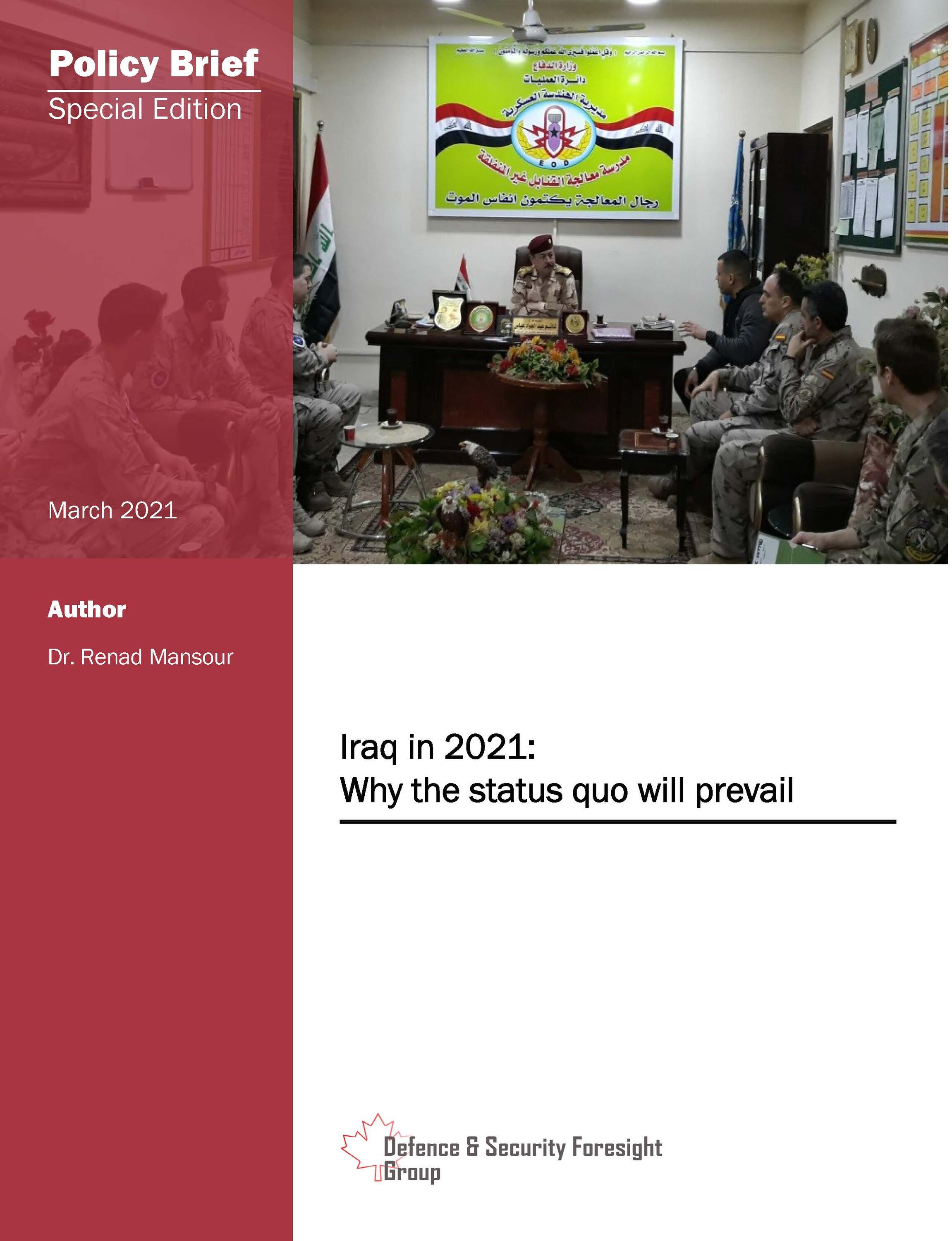
Iraq in 2021: Why the status quo will prevail (PDF)
Renad Mansour
Eighteen years after the United States and its allies invaded with a promise of democracy, the Iraqi state remains fragmented and unaccountable. Faced with multiple intertwining economic, political, regional and security crises, Baghdad is unable to respond to the basic needs of its citizens. Ideologically and economically bankrupt after years of corruption and misgovernance, the Iraqi state network is relying more on systematic violence, assassinating, arresting, and intimidating civil society activists across the country. While many had hoped that the territorial victory over the Islamic State in 2016 could usher in a new era for Iraqs fledgling democratic project, the reality seems to suggest that the country is once again falling into another conflict cycle, the likes of which have defined post-2003 Iraq and peaked at times such as 2014 when ISIS took over one third of its territory.
North American Security Policy Briefs
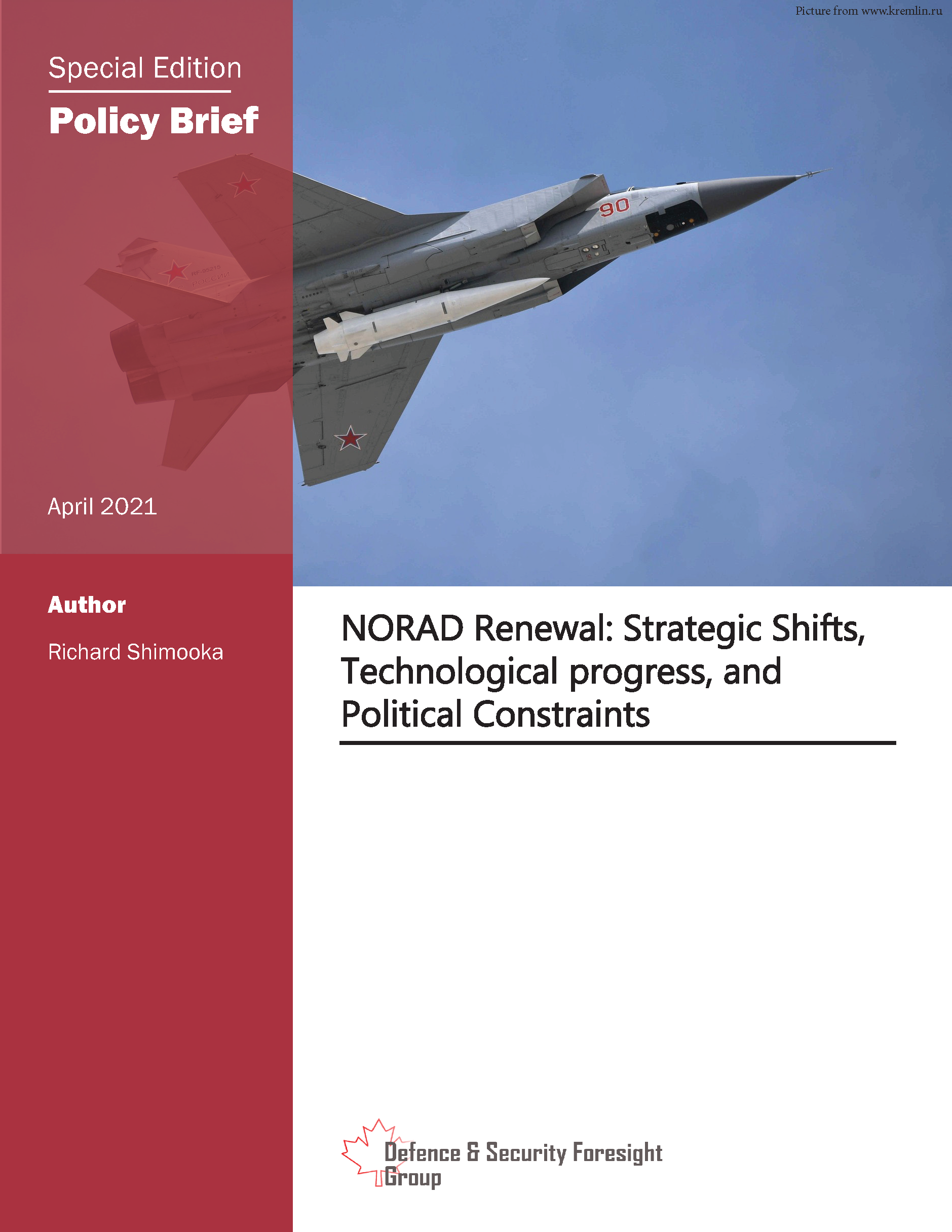
NORAD Renewal: Strategic Shifts, Technological progress, and Political Constraints (PDF)
Richard Shimooka
This briefing note will explore what the changing Integrated Air and Missile Defence (IAMD) challenge and the allied response to that change means for Canada, strategically (e.g. in terms of implications for deterrence), operationally (e.g. in terms of NORAD and domestic defence requirements), and in terms of public support (e.g. for ballistic missile defence, the CAF role in defence of critical infrastructure, etc.).
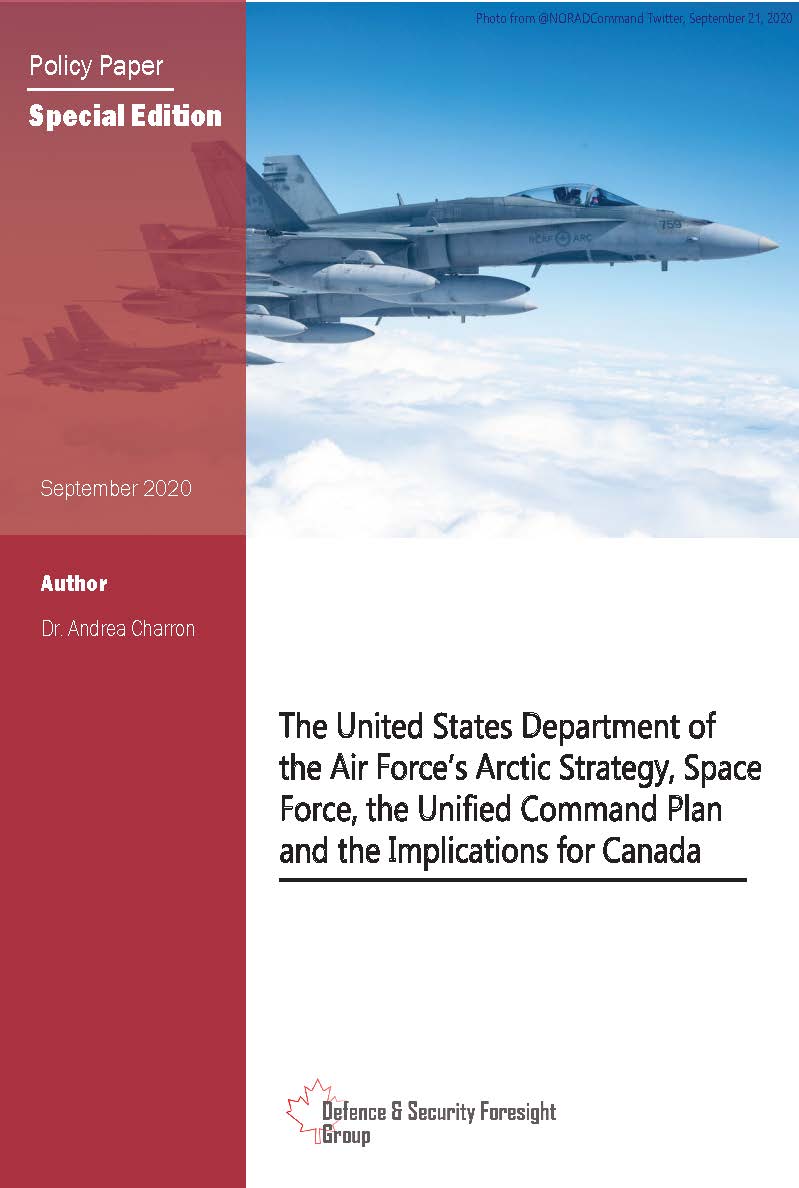
The United States Department of the Air Forces Arctic Strategy, Space Force, the Unified Command Plan and the Implications for Canada (PDF)
Andrea Charron
Canadas wish has come true. For years, the United States seemed to completely ignore the Arctic, even forgetting it was an Arctic state. Canada had to convince the United States to join the Arctic Council in 1996. In the background, NORAD regularly surveilled the Arctic and Canada and the United States exercised in the Arctic, albeit more tactically than strategically, and not for extended periods of time. Fast forward nearly twenty-five years later and the United States has concluded that the Arctic is now one of the most geostrategically important regions in the world. In rapid succession, the United States has released more Arctic strategies, including the first ever United States Department of the Air Forces Arctic Strategy. What does this latest strategy portend for the future and specifically for Canada? What does the creation of U.S. Space Force and the U.S. Unified Command Plan suggest for Canada in the future? Will this be a case of regretting or embracing the increased United States attention to the Arctic?
Special Edition Covid-19 Policy Briefs
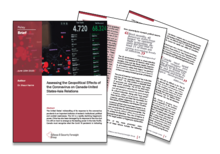
Assessing the Geopolitical Effects of the Coronavirus on Canada-United States-Asia Relations (PDF)
Shaun Narine
This paper addresses three distinct questions related to the geopolitical effects of the coronavirus pandemic: what is the impact of coronavirus on American global power and influence? How has the pandemic affected the rise of China? What should be Canadas political and security responses to the emerging redistribution of global power? The arguments of this policy brief are the following: the US mismanagement of the pandemic is the latest, and perhaps most consequential, in a series of significant failures by the US state over the past 25 years. These failures demonstrate that the US is an unreliable and unsustainable global hegemon. The pandemic has also damaged Chinas standing in the world. Even so, China is likely to consolidate its position as the dominant power in Asia within the next decade. Canada needs to accommodate American decline, Chinas relative rise, and the emergence of a multilpolar world. Canada should respond to the changing global order by increasing its support for international institutions and develop a military capacity to protect its sovereignty. It should also develop economic and political relationships with as wide a variety of states as possible. Above all, Canada must avoid becoming embroiled in an American new Cold War with China.
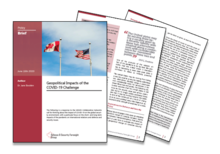
Geopolitical Impacts of the COVID-19 Challenge (PDF)
Jane Boulden
The United States has the potential to shift from being a security asset for Canada to a security liability. The very fact that this potential exists represents a change in the geopolitical foundation of Canadian security policy and thinking. The Covid-19 pandemic is not the cause of this change. Rather, the pandemic has been a catalyst, drawing together, consolidating and deepening pre-existing patterns of US behaviour at the domestic and international levels. This development has the potential to change thinking about Canadian security primarily at the international level, but it also has implications for the national and regional levels.